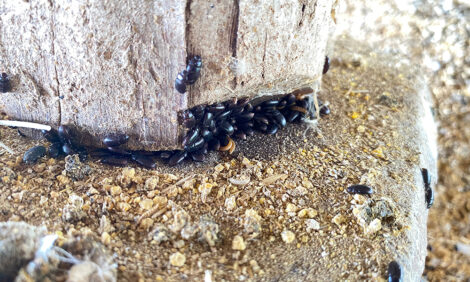



Brooding: balancing temperature for performance
By Ron Meijerhof, Senior technical specialist, Hybro B.V. Birds are warm blooded. This means that they have a specific body temperature at which their metabolic processes function at optimum level.For young chicks, optimal body temperature is normally 40ºC (104ºF) approximately, when measured on or in the cloaca.
This internal body temperature is the result of a balance between the heat produced and the heat lost by the animal. If heat production is higher than heat loss, internal temperature tends to rise. The birds will try to compensate by losing more heat (for instance by panting) or by producing less heat (for instance by eating less) If heat production is lower than heat loss, the birds may huddle together to decrease their heat loss, or consume more food to increase heat production.
The body temperature of adult broilers is often higher than optimum, as they tend to continue eating, even when their body temperature is slightly increased.
Brooding
When a chick is freshly hatched, its internal heat production is very low. To maintain correct body temperature (33-35ºC), without air movement (draft). If these conditions are not met, the bird’s body temperature will drop immediately – and in some cases, very rapidly. In sub-optimal conditions, a day old chick’s temperature can drop within one hour or less, from 104ºF to 95ºF or lower.
We would expect the birds to react immediately, by eating more or huddling together, for example. However, because the thermo-regulatory mechanism is not yet fully developed in young chicks, they are relatively defenceless against reduced temperatures. They will get cold, sit down, use precious energy screaming for their mother, and ultimately become very lethargic. As these birds will not eat and run a high risk of problems with yolk sac absorption and mortality, it is important that we get the brooding conditions right.
Encouraging the birds to be active and to eat will produce body heat as a result of digestion – and their internal body temperature will go up. Once the birds are eating, the risks associated with low body temperature are greatly diminished.
Fuel prices a factor
With fuel prices currently sky high, it is not unusual to find that, in an attempt to save on fuel costs, houses are not pre-heated as well as they should be before the chicks arrive.
It is logical that this saving is not optimal for the birds, but assuming that bottom line cost savings will compensate for this is often a mistake.
If we fail to pre-heat the house sufficiently, the birds will not achieve optimum body temperature and therefore remain lethargic. They will not eat as quickly or as much as they should, which is counter productive not only for internal heat production, but also for growth. Ultimately, to get them to eat and grow, the ambient temperature in the house will have to be raised, and kept that way for a longer time, which can cost more than was saved by not preheating the house in the first place.
Food saves fuel
By encouraging birds to eat as soon as possible, their metabolic rate will increase, they will grow faster and they will produce more heat. This enables us to drop the house temperature more quickly, which in fact we must do or the birds’ growth rate will be reduced after a couple of days, in an attempt to prevent overheating.
If we do a bad job in brooding, and only part of the flock starts well, we create an even greater problem. After a couple of days, we must decide whether to keep the temperature up for the non-starting birds, accepting the well started birds will become overheated and reduce their growth rate, or to drop the temperature and give up on the non-starters.
In all cases, our best and cheapest option is to make full use of the natural by-product of growth – the birds’ own heat production – to set them all on the right path for a good start and healthy, rapid growth.











